As I reflect on my recent 97-mile journey along the Lone Star Trail, I'm struck by the unique challenges and rewards of this humid East Texas adventure. The trail's diverse terrain, from dense forests to unexpected road walks, tested my endurance and adaptability. While the heat and humidity were constant but they couldn't overshadow the breathtaking scenery and rich wildlife encounters.
If you're considering this lesser-known thru-hike, you might wonder how to prepare for its distinct obstacles and what revelations you'll gain along the way. Let me share my experience and the lessons I learned traversing this enthralling environment.
Conquering East Texas Weather: What to Expect on a Lone Star Trail Thru-Hike
Nearly every step of the Lone Star Hiking Trail's journey through East Texas presents a unique weather challenge. As you traverse this diverse ecosystem, you'll encounter a humid climate that can greatly impact your comfort and hydration needs.
The trail's weather conditions are especially demanding in late spring and summer, when high temperatures combine with oppressive humidity. We have had little rain recently (Fall 2024) but once the rain starts it will result in muddy and boggy trails with heavy rains sometimes leading to calf deep water and potential difficulties finding potable water sources.
Weather fluctuations are common in the forest, but it must be understood this is Texas Summer you will move from hot nights to hotter days. Where as we move into the end of Fall you encounter wilder fluctuations with colder mornings often giving way to warmer conditions later. This variability requires careful planning and adaptability.
| Month | Season | Avg Low (°F) | Avg High (°F) | Avg Rainfall (inches) | Avg Humidity (%) |
|---|---|---|---|---|---|
| January | Winter | 37 | 59 | 4.5 | 80 |
| February | Winter | 41 | 62 | 3.5 | 76 |
| March | Spring | 48 | 70 | 4.0 | 70 |
| April | Spring | 55 | 77 | 3.5 | 65 |
| May | Spring | 64 | 84 | 5.2 | 70 |
| June | Summer | 70 | 90 | 5.5 | 75 |
| July | Summer | 72 | 92 | 4.6 | 76 |
| August | Summer | 71 | 92 | 4.8 | 77 |
| September | Fall | 66 | 86 | 5.0 | 75 |
| October | Fall | 55 | 77 | 4.0 | 70 |
| November | Fall | 45 | 66 | 4.0 | 75 |
| December | Winter | 39 | 60 | 4.4 | 80 |
As you progress through your thru-hike, you'll need to constantly adjust to these changing environmental factors, ensuring you're equipped to handle East Texas's unique weather challenges during your journey.
Breaking Down the Miles: Day-by-Day LSHT Route Guide
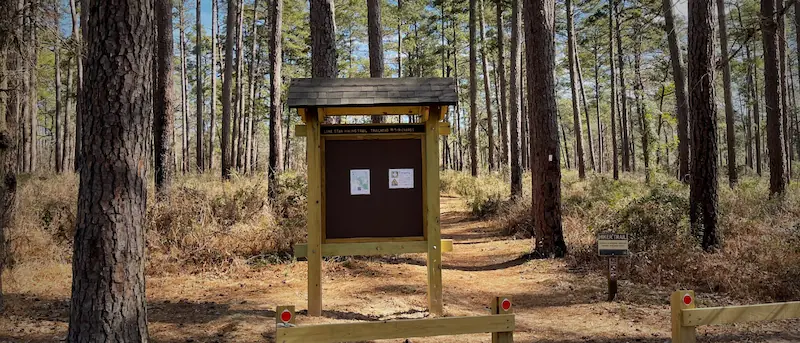
As you commence your Lone Star Trail thru-hike, you'll cover a substantial distance over five days, averaging daily distances between 19 and 20 miles. While this may seem like a crazy amount of daily miles, this is Texas and the trail is very flat in general which means miles should fly by.
Day 1 starts with a 19.3-mile trek to your first campsite.
Day 2 presents a challenging 20-mile journey, making for an exciting start to your adventure.
Day 3 continues with another 20-mile hike. I recommend strategically planning breaks at trailhead parking lots to manage fatigue and maintain hydration. Water sources can be scarce on the Lone Star Hiking Trail, so plan accordingly.
Day 4 requires a solid effort with 18.5 miles to cover, offering a mid-trail resupply opportunity to ease logistics. You'll camp near your car for added convenience.
On the final day, you'll tackle the remaining 19.9 miles, pushing you over the total distance of 96.7 miles.
Be aware of dry stretches that could impact your water sourcing. The humid and many times limited rainy terrain adds an extra layer of difficulty to your journey.
Humidity-Proof Your Gear: Essential LSHT Equipment Tips
While planning your daily mileage is important, your gear's performance in the humid conditions of the Lone Star Trail can make or break your thru-hike experience.
Don't underestimate the criticality of quality waterproof gear, especially your jacket, pants, and tent. Unexpected heavy rains are common in this region, and staying dry is vital for both comfort and safety. I tend to carry three pairs of Injinji socks and at least one pair of DarnTough socks.
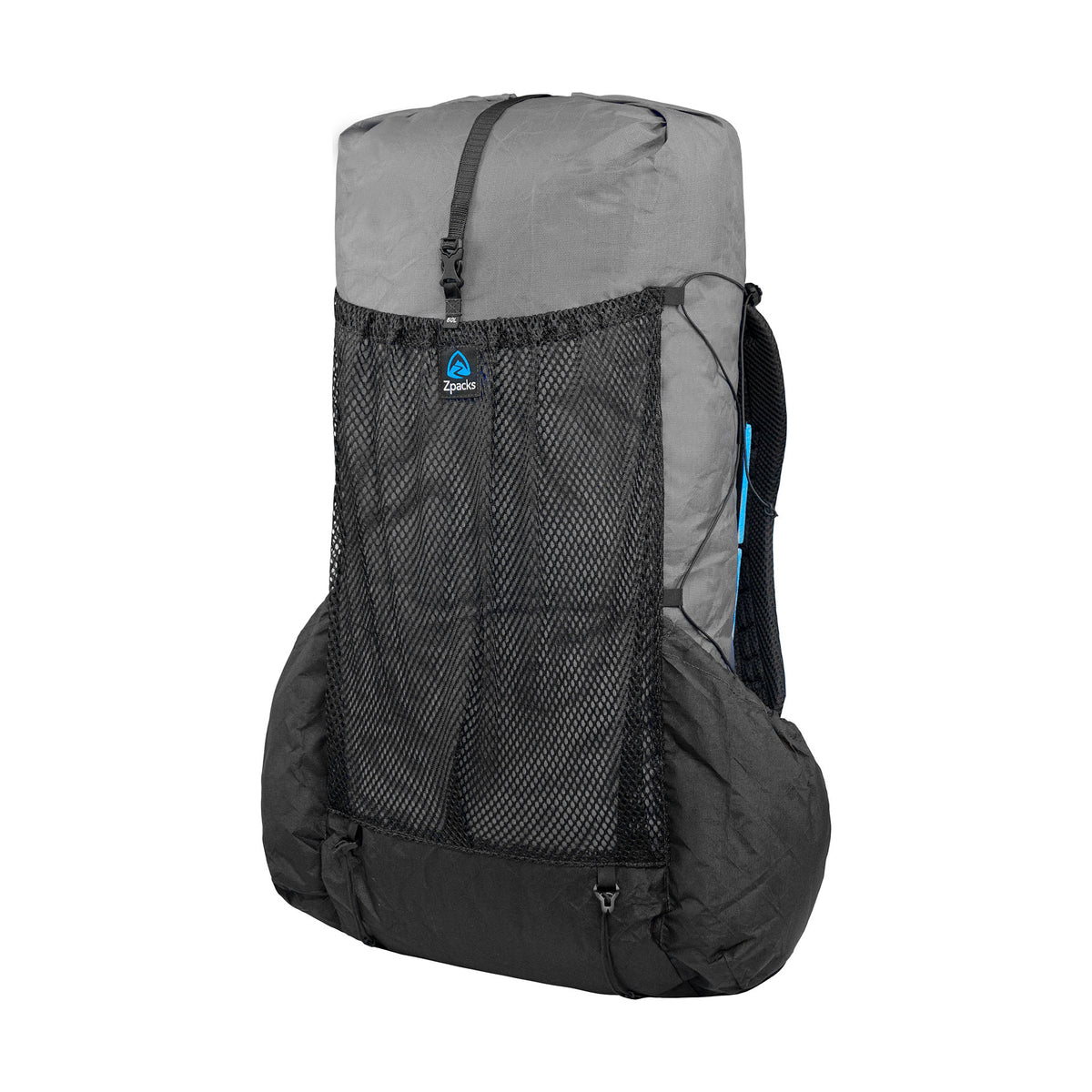
Choose breathable ligthweight footwear like trail runners or even Xero sandals to minimize moisture buildup, which can lead to blisters and fungal infections in prolonged exposure to humidity.
My gear for another LSHT December 2024 thru-hike: Lighterpack
Consider treating your clothing and gear with permethrin for added protection against insects, which thrive in humid environments. This precaution can greatly reduce your risk of bites and potential illnesses.
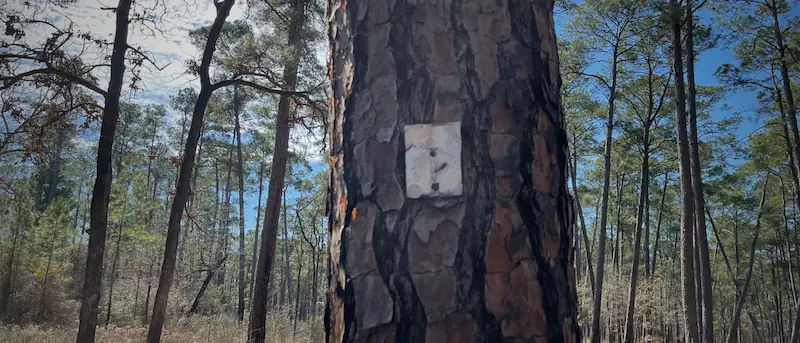
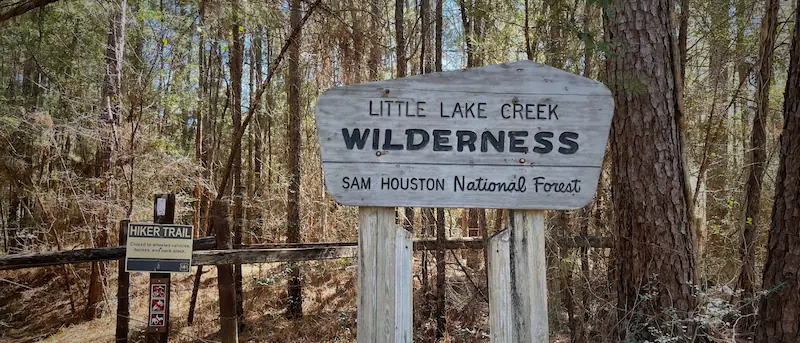
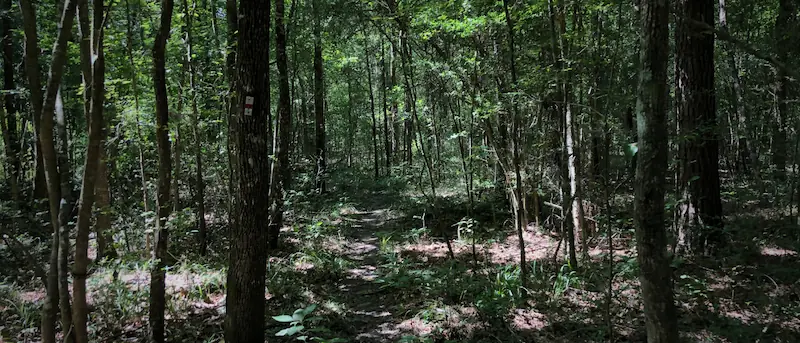
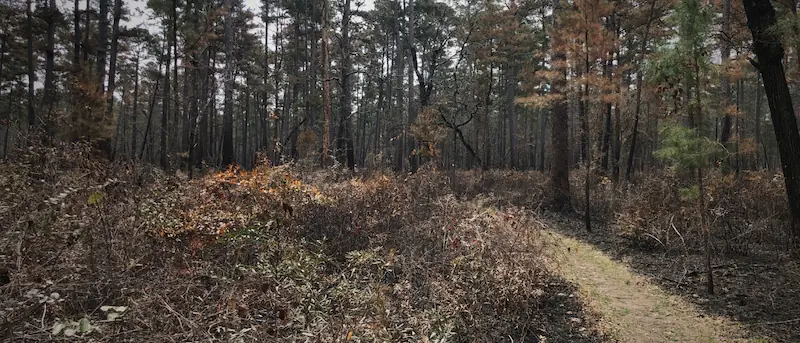
The LSHT has metal blazes, clear signage at sections, can be green or burned to maintain fire safety.
Water Strategy: Sources, Safety, and Resupply on the LSHT
Tackling the Lone Star Hiking Trail requires careful planning around water management, as sources are both limited and often questionable in quality. Most water you'll encounter is stagnant and requires treatment and filtering before consumption. The D.R.O.P.S. system is essential for assessing water sources along your route, though you should always carry a backup plan.
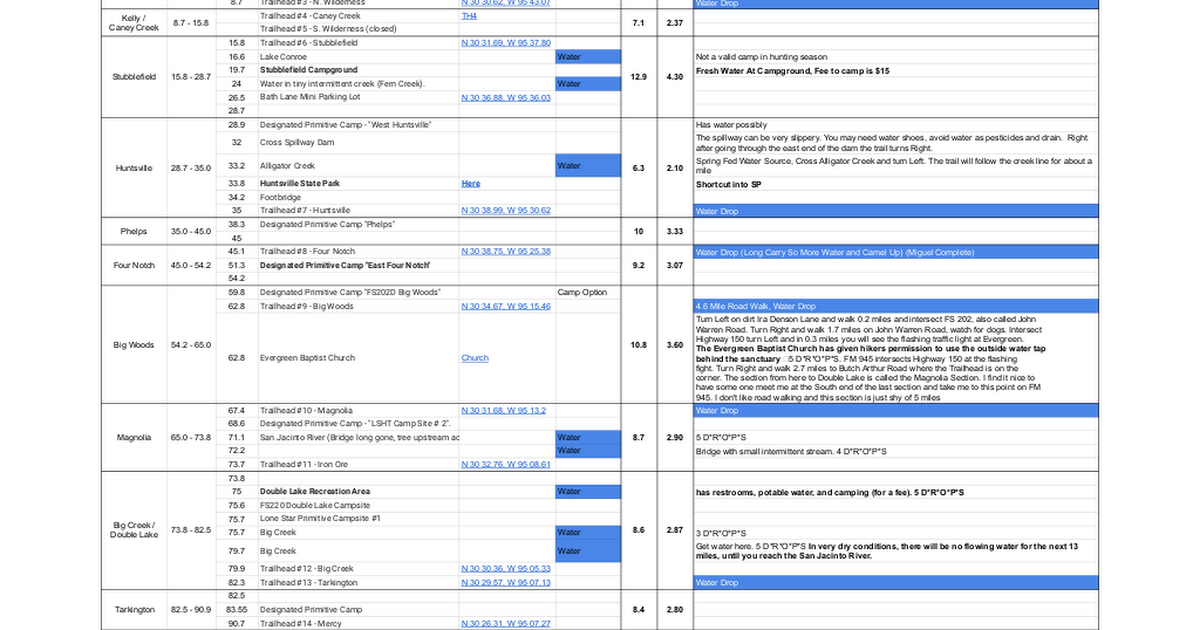
Make a Personal Copy To Build Out Your Trip
Your daily water needs will average around 3 liters, accounting for the humid East Texas climate. Carry either a portable water filter or chemical treatment system - ideally both for redundancy.
Filters handle bacteria and protozoa, while chemical treatments provide additional protection against harmful microorganisms.
The trail offers some strategic resupply points if you use state parks where you can obtain potable water, showers, and at times, supplies. For longer hikes, using the Huntsville Post Office could be a method to give yourself a full resupply option with advance coordination and planning.
Be particularly vigilant about water sources near the east fork of the San Jacinto, which can become non-fordable after rain.
Pro Tips:
- Consider shuttle services or car drops to optimize your resupply strategy
- Take advantage of free camping (when not hunting season) for flexible planning
- Always filter/treat water, regardless of source
- Plan extra capacity for dry stretches between reliable sources
| Location | Distance (miles) | Resupply Options |
|---|---|---|
| Trailhead 1 | 0 | Start with full supplies |
| Stubblefield Campground | 19.7 | Camp Option With Showers & Water |
| Huntsville State Park | 33.8 | Camp Option With Showers & Water |
| Evergreen Baptist Church | 62.8 | Nice People Can Speak to About Leaving Pickup In Area |
| Double Lake Recreation Area | 75 | Camp Option With Showers & Water |
East Texas Trail Magic: Wildlife and Views Along the LSHT
Nature's abundance greets hikers on the Lone Star Hiking Trail, offering a rich mosaic of wildlife and scenery. As you traverse the diverse ecosystems, you'll encounter a variety of animals, including snakes, spiders, and numerous bird species. Be prepared for these wildlife encounters, especially in the swampy areas and lush environments along the trail.
The trail's scenic views are a highlight of our more flatlands as they are more diverse than many while not having many vertical feet. You'll be treated to views focused on different types of forests, rivers, bayous, creeks, and lakes, enhancing your hiking experience. In early spring, the trail comes alive with lively wildflowers, adding splashes of color to your surroundings.
The natural diversity of East Texas is on full display as you hike the mostly flat terrain. Occasional steep embankments provide some variation, but the trail remains accessible to most hikers.
You'll pass through swampy areas, meadows, and wooded sections, each offering unique opportunities to observe the local flora and fauna.
This ever-changing backdrop showcases the region's ecological richness, making your thru-hike an immersive journey through the heart of Texas' natural beauty.
| Animal | Description | Behavior | Safety Tips |
|---|---|---|---|
| Mammals | |||
| White-tailed Deer | Large, tan-colored deer with white tail | Most active at dawn/dusk; commonly seen | Keep distance of at least 50 feet; don't feed |
| Eastern Gray Squirrel | Gray with bushy tail; medium-sized rodent | Active during day; seen in trees | Generally harmless; don't approach or feed |
| Nine-banded Armadillo | Armored mammal with long snout | Nocturnal; often seen digging | Avoid handling; can carry diseases |
| Wild Hogs | Dark-colored; can be very large | Active day/night; travel in groups | Can be aggressive; keep distance; climb tree if charged |
| Birds | |||
| Red-shouldered Hawk | Brown hawk with reddish shoulders | Soars overhead; distinctive "kee-aah" call | Safe to observe from distance |
| Pileated Woodpecker | Large black/white woodpecker with red crest | Loud drumming; makes rectangular holes | Listen for drumming on dead trees |
| Northern Cardinal | Males bright red; females brownish-red | Common near trail edges | Safe to observe; listen for clear whistle |
| Pine Warbler | Yellow belly, gray back | Found in pine tree canopy | Safe to observe; listen for trilling song |
| Reptiles & Amphibians | |||
| Copperhead | Tan/brown with hourglass patterns | Well-camouflaged in leaves | VENOMOUS - Keep distance; watch where stepping |
| Texas Coral Snake | Red, yellow, black bands | Shy; usually retreats | VENOMOUS - Do not handle; give wide berth |
| Green Anole | Small lizard; changes green to brown | Active on trees and shrubs | Harmless; best left undisturbed |
| Gulf Coast Toad | Large toad; brown/gray coloring | Active at night near water | Harmless but don't handle |
| Insects | |||
| Luna Moth | Large pale green moth | Nocturnal; seen near lights | Harmless; beautiful to observe |
| Fire Ants | Small red ants in large mounds | Aggressive when disturbed | Avoid mounds; bites are painful |
Beyond the Miles: What the LSHT Teaches Every Thru-Hiker
The journey's end brings a wealth of mental and physical takeaways for Lone Star Trail thru-hikers.
The trail's near solitude offers moments of introspection and connection with nature, aligning with the friluftsliv concept of outdoor living for well-being.
You'll also experience the power of social bonds, as interactions with fellow hikers encourage a sense of community, providing emotional support in physically demanding sections.
Careful planning for hydration and resupply logistics will hone your organizational skills, preparing you for future challenges.
The physical endurance required pushes your limits, while the mental aspects of the journey encourage personal growth.
Car/Shuttle/Taxi
Because the trailheads are remote and have no standard street address, Uber/Lyft may not drop-off or pick-up along the trail. There have been exceptions, but hikers have reported these services as spotty. Nearby taxi services accepting most major credit cards include the following:
- Conroe: CVS Taxi Cab (936)-537-5829
- Cleveland: 350 Cab (936)-328-8181
The table below shows individuals who have agreed to provide shuttle services between the LSHT Trailheads. Give them a call or text to check availability.
| Contact # | Name | Shuttle Service |
| 936-577-7293 | Charlotte Tomkavits | Between all Trailheads, if available (also has an Air BnB in Huntsville Area) |
| 936-900-9036 | Adam Helms | Between all Trailheads, if available |
| 979-422-7011 | Jessica Gott Howarth | Between all Trailheads, if available |
| 936-661-4201 | Wanda Wilson | Between all Trailheads, if available |








